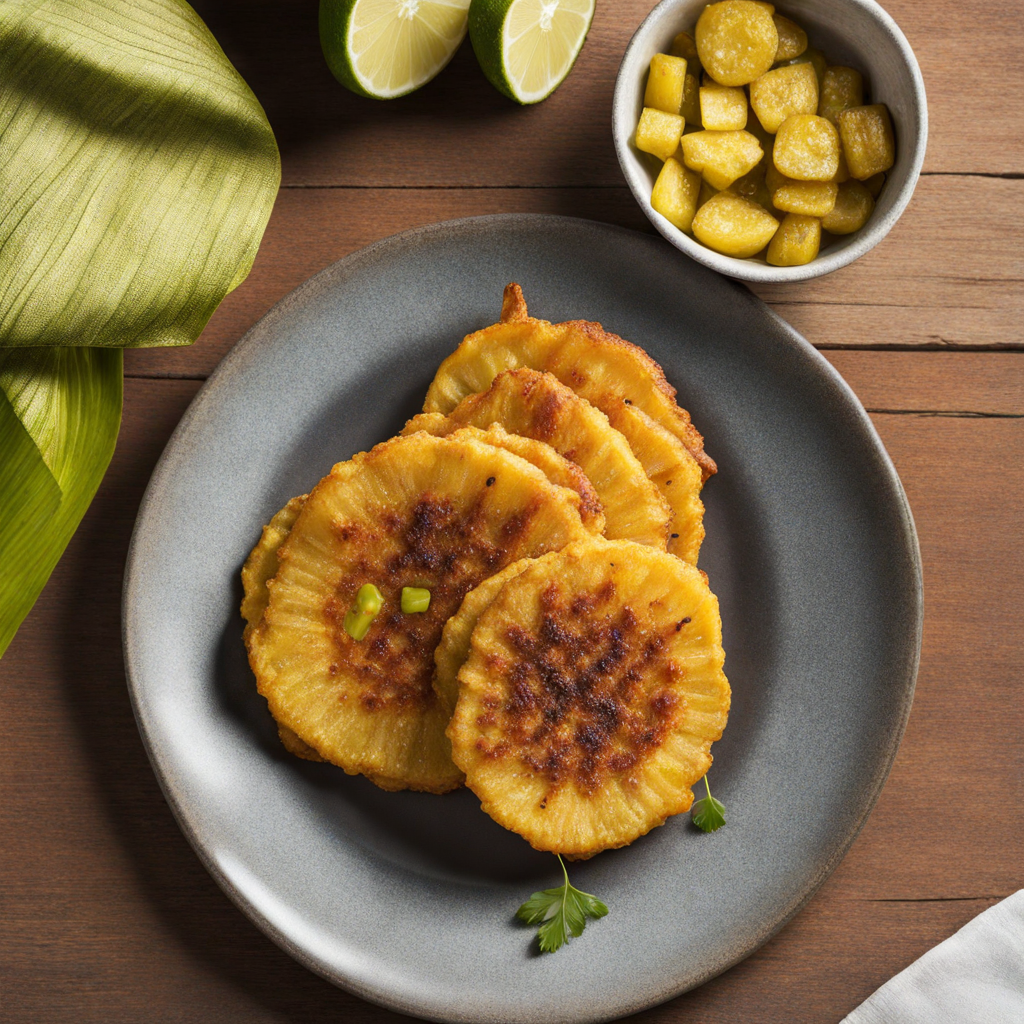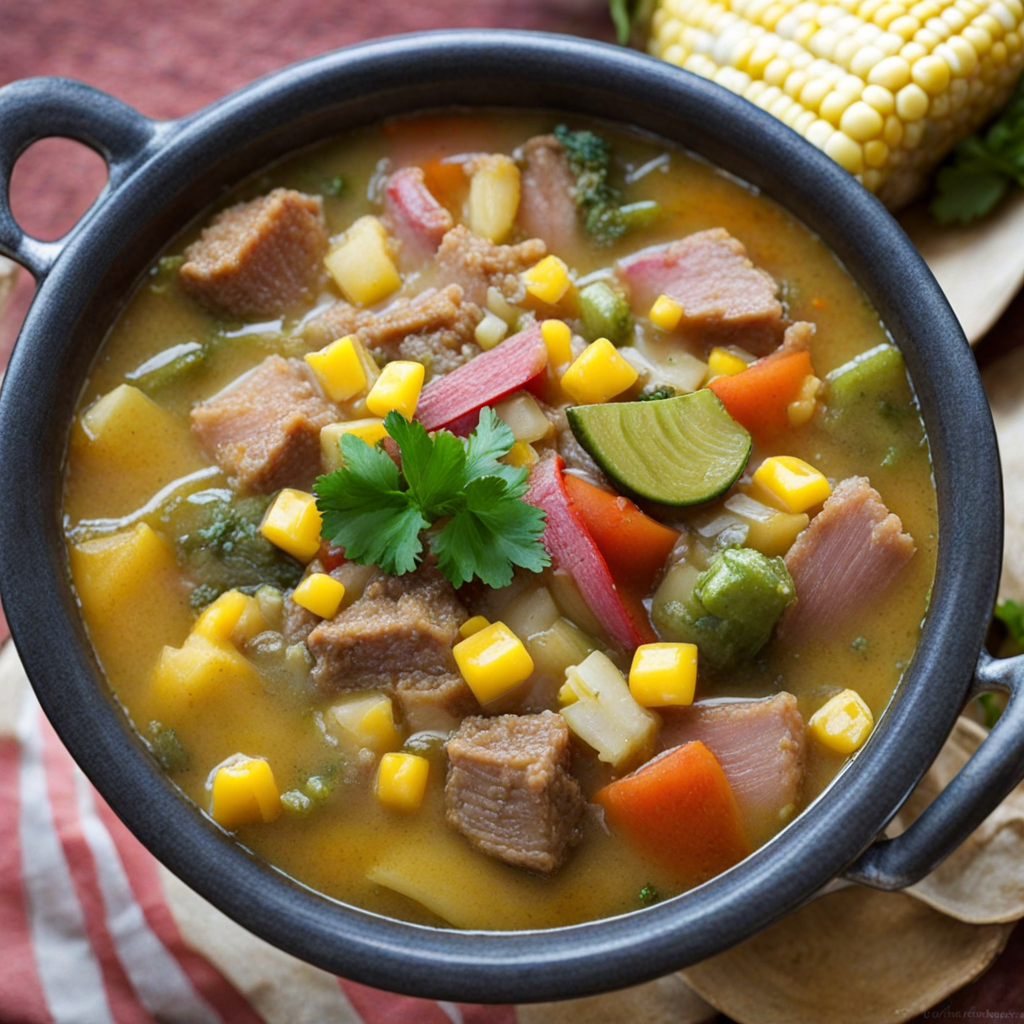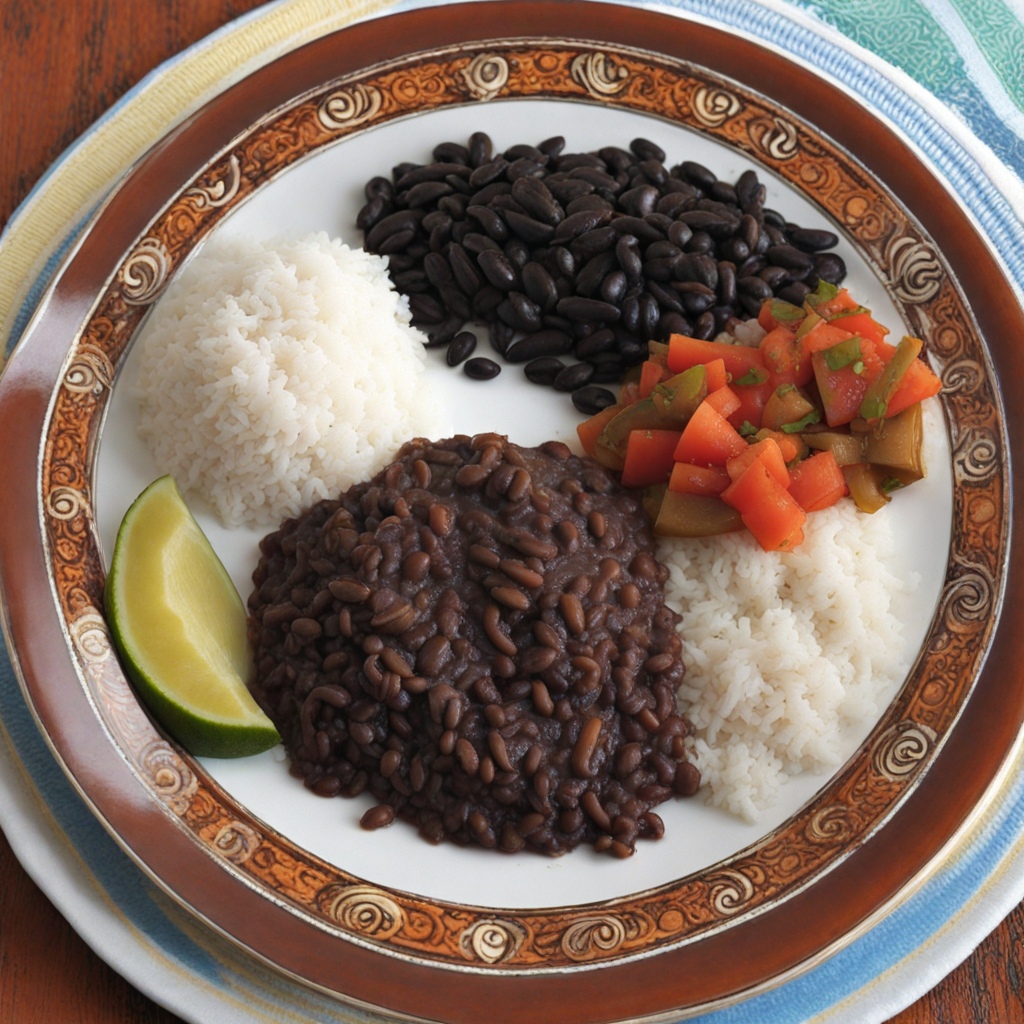Tostones
Tostones are a beloved Cuban delicacy made from green plantains, offering a delightful combination of crispy texture and savory flavor. The preparation begins with unripe plantains, which are peeled, sliced, and fried until they achieve a golden hue. After the initial frying, the slices are removed from the oil and flattened, typically using a sturdy object like a plate or a tostonera, a specialized press. This step is crucial as it transforms the plantains into their characteristic shape and texture, allowing them to crisp up beautifully in the second frying. The final result is a crunchy exterior that gives way to a tender, starchy interior, making them a perfect canvas for a variety of toppings or dips. The flavor of tostones is subtly sweet with a hint of earthiness, allowing them to pair exquisitely with a range of accompaniments. Traditional Cuban tostones are often enjoyed with a sprinkle of sea salt, enhancing their natural taste. However, they can also be served with garlic sauce, a zesty mojo, or even a dollop of guacamole, making them versatile appetizers or snacks. Their ability to absorb flavors makes them an ideal partner for meats, beans, and other flavorful dishes, bridging the gap between different elements of a meal. In Cuba, tostones are more than just a food item; they are a cultural symbol that embodies the island's culinary heritage. Often served at gatherings, celebrations, and as a staple in Cuban households, they evoke a sense of nostalgia and community. Whether enjoyed as a side dish or a standalone snack, tostones invite you to experience the vibrant flavors of Cuban cuisine, making every bite a delightful journey into the heart of the Caribbean.
How It Became This Dish
The History of Tostones: A Culinary Treasure from Cuba Tostones, the delightful twice-fried plantain slices, are not just a beloved Cubano snack but also a culinary symbol that reflects the rich history and cultural intermingling of the Caribbean. This dish, simple yet sophisticated in its flavor and texture, serves as a lens through which we can explore the origins, cultural significance, and evolution of Cuban gastronomy. #### Origins: From the Heart of the Tropics The story of tostones begins with the plantain, a starchy fruit native to Southeast Asia that made its way to the Caribbean and Central America through the trade routes established after the Columbian Exchange in the late 15th and early 16th centuries. The plantain was quickly adopted by local populations due to its versatility and ability to thrive in tropical climates. In Cuba, plantains became a staple food, consumed in various forms. The preparation of tostones likely originated from the indigenous Taíno people, who recognized the utility of the plantain. The Taíno used the fruit in their diets, and its transformation into tostones may have evolved as a method of preserving the plantain and enhancing its flavor through frying. As the island became a melting pot of cultures, including Spanish colonists, African slaves, and indigenous communities, the preparation of tostones was influenced by these diverse culinary traditions. The Spanish introduced frying techniques, while African influences brought about a preference for bold flavors and cooking methods that emphasized texture. #### Cultural Significance: A Symbol of Identity Tostones are more than just a snack; they are a cultural artifact that embodies the essence of Cuban identity. As the island faced social and political changes, particularly during the 19th and 20th centuries, tostones became a comfort food for many Cubans. They are often served at family gatherings, celebrations, and holidays, symbolizing togetherness and shared history. The dish has also traversed international boundaries, finding its way into the kitchens of Cuban expatriates and the broader Latino community in the United States and beyond. In Cuban-American culture, tostones are often served as a side dish or appetizer, showcasing their adaptability and enduring popularity. The dish serves as a bridge to the homeland for many who are far from Cuba, evoking memories of family meals and traditional celebrations. #### Development Over Time: From Simple Snack to Culinary Icon The evolution of tostones reflects broader trends in Cuban cuisine and culture. Traditionally, tostones were made by slicing green plantains into thick rounds, frying them once until golden, then mashing them into patties, and frying them again until crispy. This method provided a satisfying crunch and a soft interior that became a canvas for various toppings or dips, such as garlic sauce or mojo, a garlicky citrus marinade. As Cuba underwent significant political and economic changes throughout the 20th century, from the Cuban Revolution of 1959 to the subsequent U.S. embargo, the way food was prepared and consumed also transformed. Ingredients became scarcer, and families had to adapt their recipes with whatever was available. In this context, tostones remained a staple due to the hardiness of plantains, which could be grown locally and were relatively inexpensive. The creativity of Cuban cooks flourished during this time, leading to variations of tostones. Some began adding spices or serving them with different dipping sauces, such as spicy aioli or avocado-based dips. Chefs in Cuba and Cuban-American restaurants in the U.S. began to innovate, pairing tostones with seafood, meats, and even vegetarian options. This culinary experimentation helped toons become a popular appetizer in Latin American restaurants throughout the United States. #### Tostones in Global Gastronomy In recent years, the global culinary scene has embraced tostones, acknowledging them as a quintessential Latin American dish. As the world becomes more interconnected, the popularity of tostones has surged, leading to their inclusion on diverse menus, from high-end restaurants to casual eateries. Chefs are increasingly recognizing the potential of this humble dish, often incorporating it into gourmet creations or fusion cuisine, which showcases its versatility. Food festivals celebrating Latin cuisine have also helped to elevate the status of tostones, allowing chefs to showcase innovative interpretations while honoring traditional preparations. This visibility has contributed to a broader appreciation of Cuban flavors and the cultural significance of tostones. #### Conclusion: An Enduring Legacy Today, tostones are a beloved dish not only in Cuba but throughout the Caribbean and Latin America, often enjoyed as a side dish, appetizer, or snack. Their crispy texture and ability to pair with an array of flavors have made them a staple in diverse culinary landscapes. Beyond their deliciousness, tostones serve as a reminder of the historical forces that shaped Cuban cuisine—colonial influences, African heritage, and the resilience of the Cuban people. As we savor tostones, we engage in a culinary conversation that spans centuries, reflecting the stories of the people who cultivated, prepared, and enjoyed them. This dish not only nourishes our bodies but also connects us to a rich cultural tapestry, illustrating how food can transcend borders and time, bringing people together in shared experience and celebration. Whether enjoyed in a Cuban home, a bustling restaurant, or a food festival, tostones remain a testament to the enduring legacy of Cuban cuisine and its ability to adapt and thrive in a changing world.
You may like
Discover local flavors from Cuba







